Sunrise Readers Book 7
Fun and Games
Sight Words/ Flash Cards
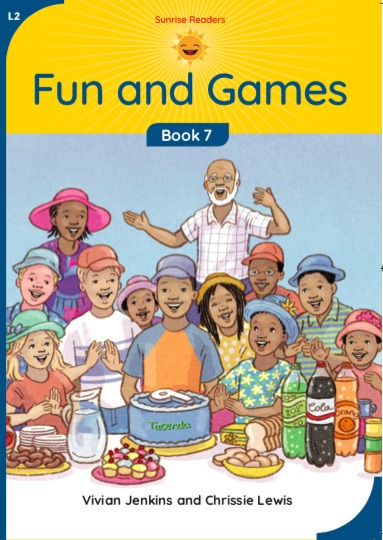
Sight Words – Flashcards
Why are flashcards useful? A reminder from an earlier blog:
- They appeal to all learning styles It’s a good way to focus the children’s attention – remember the multiple intelligences present in the room: we learn in different ways. Having a visual clue assists the many visual learners, along with verbally saying the word for auditory leaners, letting children hold the card if used in a game can help kinaesthetic learners. (I’ve made cut out letters from sandpaper in the past, or written over the word in glue and sprinkled it with sand!), to let these learners trace over the letters.
- Little and often is key to building learning at any age and stage. Flashcards can be picked up and used for a few minutes’ practice throughout the day, reinforcing a more structured lesson. Take relevant words outside for PE – hold up an action word, such as jump, run, hop, go, stop, come. Blow a whistle to change the word – hold up the next word. The children don’t have to read aloud – their actions are enough and the goal is to have fun whilst learning.
- Aids and trains memory: Flashcards help the brain to do what it does naturally! Set out a few picture OR word cards (keep them separate especially at the start). I’d start with 4 or 5 and build up to about 9. After practicing, remove one card at a time (or turn over if the back is blank), but still get the children to say the word that was in the space.
Using flashcards/ word cards for training memory:
- They are an effective way to present, practice and recycle vocabulary – useful for repetition.
Remember, remember! We suggest an eclectic approach to the teaching of reading. It is vitally important that learners should systematically follow an effective phonics curriculum to teach letter sounds and blends. At the same time, sight words should be introduced using flash cards/ word cards.
Sunrise Readers Book 7 – Fun and Games Flashcards
You will find links to free downloadable PDFs for three sets of flashcards/word cards below:
- Large classroom flashcards for use with the whole class or groups.
- Medium-sized (3×3) flashcards for use in groups and in games with individuals or pairs.
- Small flashcards to be used for review
- Word lists for each story – to be taken home to review
Large Classroom Flashcards
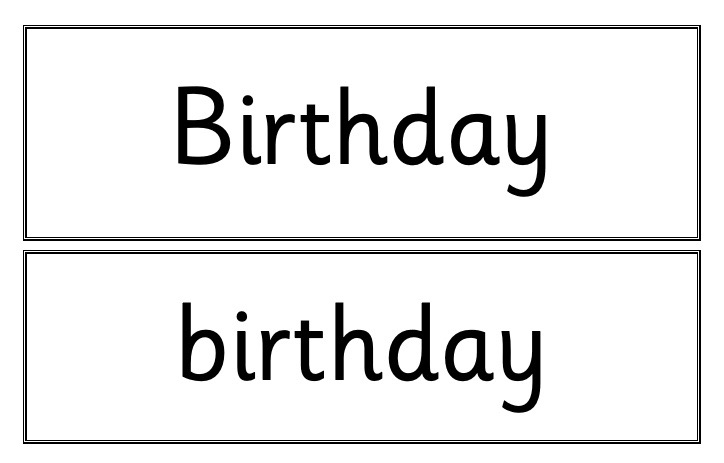
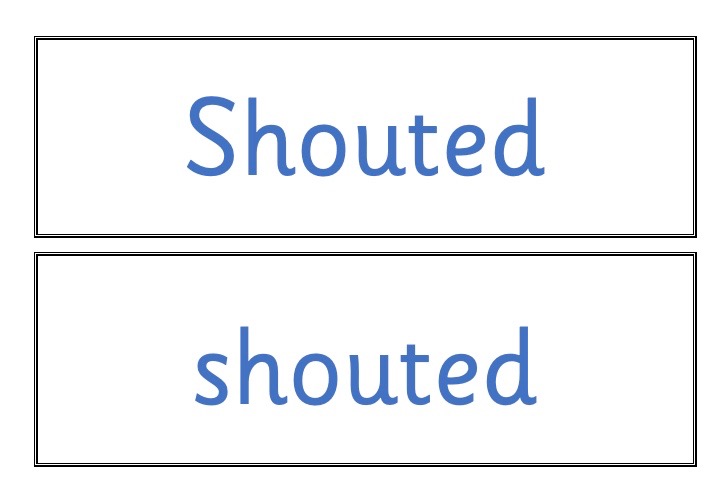
Complete Set of Large Flashcards/ Wordcards for the Words introduced in this book (See back cover).
- Print the flashcards and cut them out.
- Paste them onto card:
- lower case words in the front, and
- the same word starting with a capital letter on the back of the card.
3 Laminate for durability.
4 Store each book’s wordlist/ flashcards in a separate box (a shoe box is ideal)
5 Please note – past tense is introduced in Book 5.
For your interest, past tense words are recorded in blue.
- N.B. We have supplied each word in 2 forms – starting with i) lower case and ii) capital letters. A WORD LOOKS DIFFERENT TO A NEW LEARNER WHEN IT HAS A CAPITAL LETTER!
- Many teachers prefer to introduce the words using just the lower case letters, unless it’s a proper noun: Grandfather, Joseph, Noah etc. However, others flip the cards to expose the children to both.
Medium Sized 3×3 Flashcards – ideal for review or games with groups, pairs, individuals.
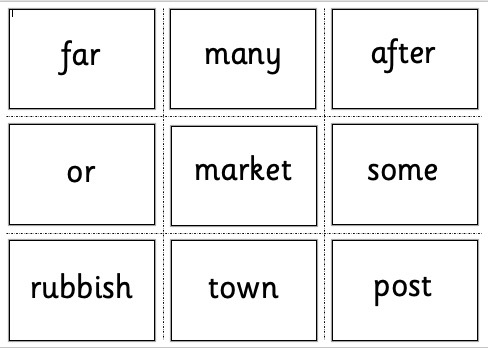
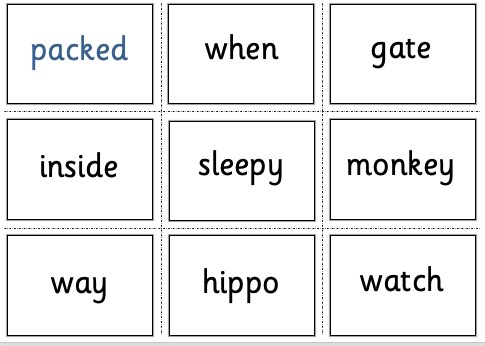
Smallest Flashcards – ideal for review
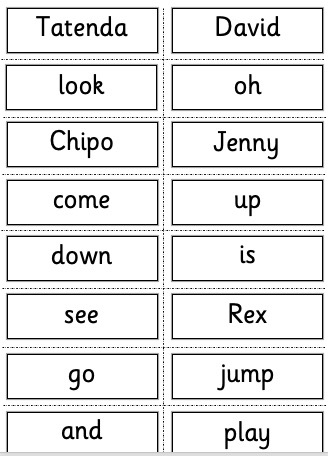
Story by story wordlists for review
Teachers may want to stop sending the smallest word cards home (cut out and in soap boxes) for learners’ to review with care-givers. They may prefer to give learners a small A6 notebook with the wordlists for each story pasted onto pages. (See image below).
A sample exercise has been given to give teachers an idea of how they could give learners further practice with the sight words – Read and write. (See the image below.)
Many of these are sight words, but some are simple cvc words that can be sounded out once the learners have learned the sounds that the letters make. (Teachers will be introducing letters and their sounds systematically whilst also introducing sight words). By the time a learner is reading Book Seven, she may be able to sound the following Book Seven words out for herself:
Sound Say the
It out: word: Make a sentence:
b-u-n – bun I like eating buns.
t-o-p – top. The cup is on top of the table.
Learners who know their sounds may enjoy attempting to sound out these 4 letter words from Book 7:
f-r-o-m – from
s-i-n-g – sing
s-o-n-g – song
t-e-n-t – tent
c-a-m-p – camp
z-e-b-r-a –
As before: Teachers may now prefer to send sight words home to be reviewed in lists rather than as flashcards. (This is mainly for convenience sake, as the flashcards have multiple benefits including being reviewed in games.)
These lists include the sight words for every story. They are introduced and reviewed before learners begin to read the book.
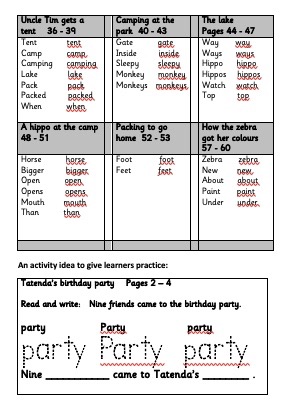
Refer to the Teacher’s Manual and our blogs and vlogs on https://sunrisereaders.wordpress.com/
For guidance and ideas for introducing vocabulary and reinforcing with fun activities and games.
